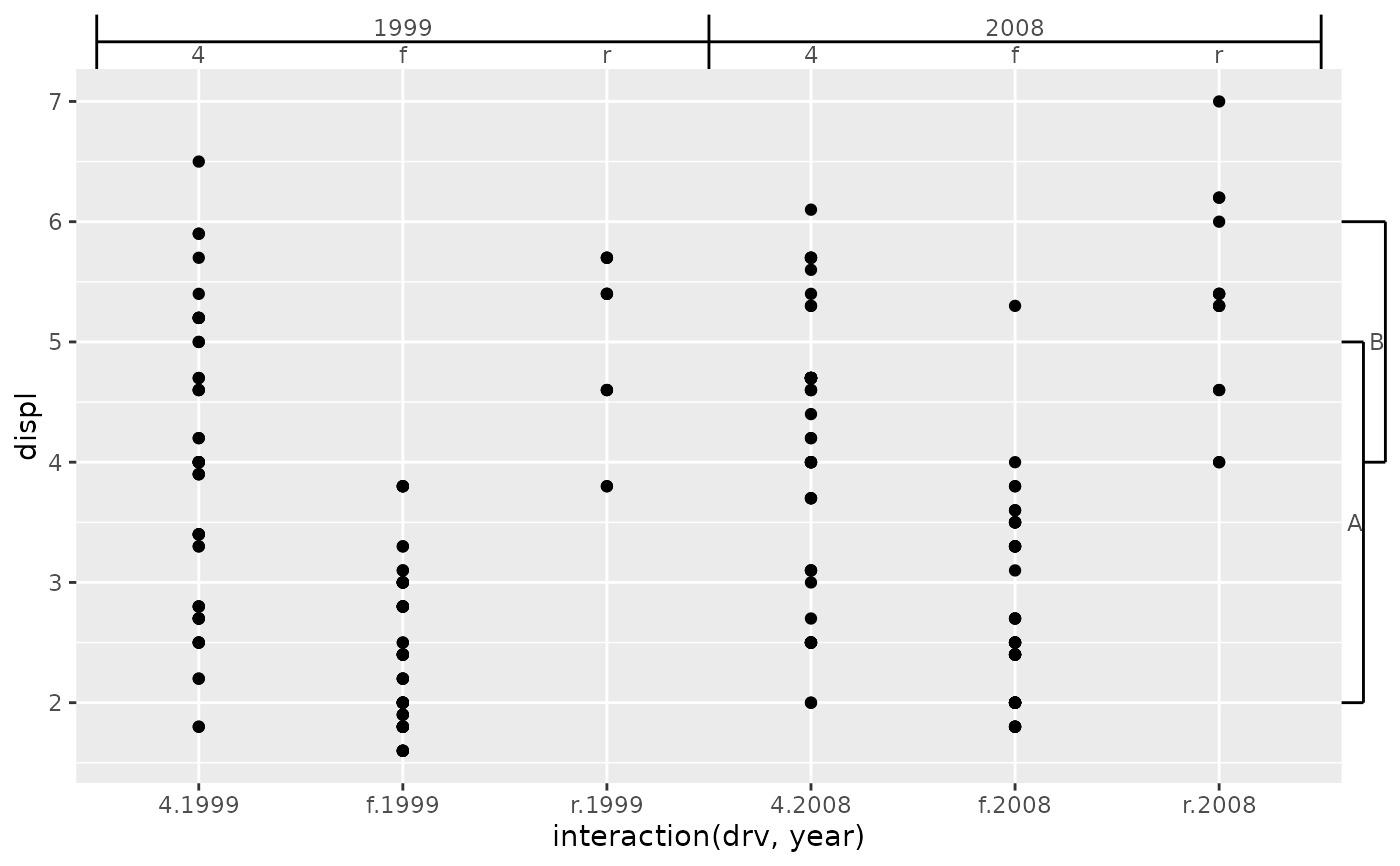This function constructs a fence guide primitive. The customisation options are easier to understand if we view fence 'post' as the vertical pieces of a real world fence, and the 'rail' as the horizontal pieces.
Arguments
- key
A range key specification. See more information in the linked topic.
- rail
A
<character[1]>giving an option for how to display fence railing. Can be either"none"(default) to display no railings,"inner"to draw one rail closer to the plot panel,"outer"to display one rail farther from the plot panel, or"both"to sandwich the labels between rails.- angle
A specification for the text angle. Compared to setting the
angleargument inelement_text(), this argument uses some heuristics to automatically pick thehjustandvjustthat you probably want. Can be one of the following:NULLto take angles and justification settings directly from the theme.waiver()to allow reasonable defaults in special cases.A
<numeric[1]>between -360 and 360 for the text angle in degrees.
- oob
A method for dealing with out-of-bounds (oob) ranges. Can be one of
"squish","censor"or"none".- drop_zero
A
<logical[1]>whether to drop near-zero width ranges (TRUE, default) or preserve them (FALSE).- pad_discrete
A
<numeric[1]>giving the amount ranges should be extended when given as a discrete variable. This is applied after thedrop_zerosetting.- levels_text
A list of
<element_text>objects to customise how text appears at every level.- levels_post, levels_rail
A list of
<element_line>objects to customise how fence posts and rails are displayed at every level.- theme
A
<theme>object to style the guide individually or differently from the plot's theme settings. Thethemeargument in the guide overrides and is combined with the plot's theme.- position
A
<character[1]>giving the location of the guide. Can be one of"top","bottom","left"or"right".
Styling options
Below are the theme options that determine the styling of this guide, which may differ depending on whether the guide is used in an axis or legend context.
Common to both types is the following:
gguidance.fence.postan<element_line>for the line used to draw the pieces orthogonal to the direction of the scale.gguidance.fence.railan<element_line>for the line used to draw the pieces parallel to the direction of the scale.
See also
Other primitives:
primitive_box(),
primitive_bracket(),
primitive_labels(),
primitive_line(),
primitive_spacer(),
primitive_ticks(),
primitive_title()
Examples
# A standard plot
p <- ggplot(mpg, aes(interaction(drv, year), displ)) +
geom_point()
key <- key_range_manual(c(2, 4), c(5, 6), c("A", "B"))
# Adding as secondary guides
p + guides(
x.sec = primitive_fence(rail = "inner"),
y.sec = primitive_fence(key = key, rail = "outer")
)

